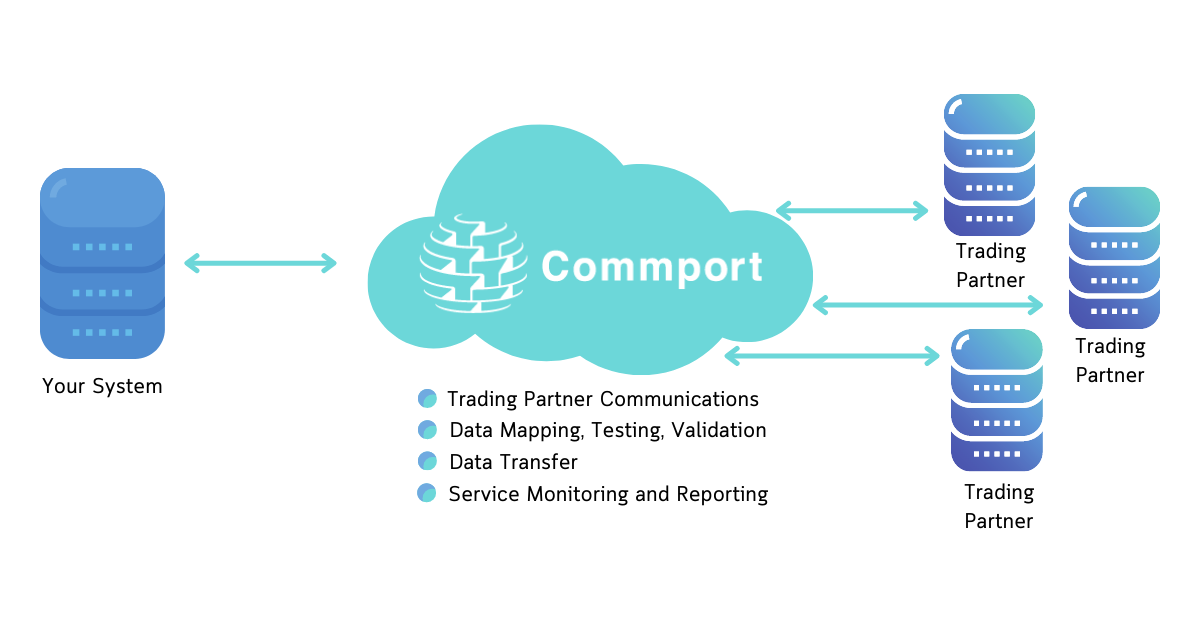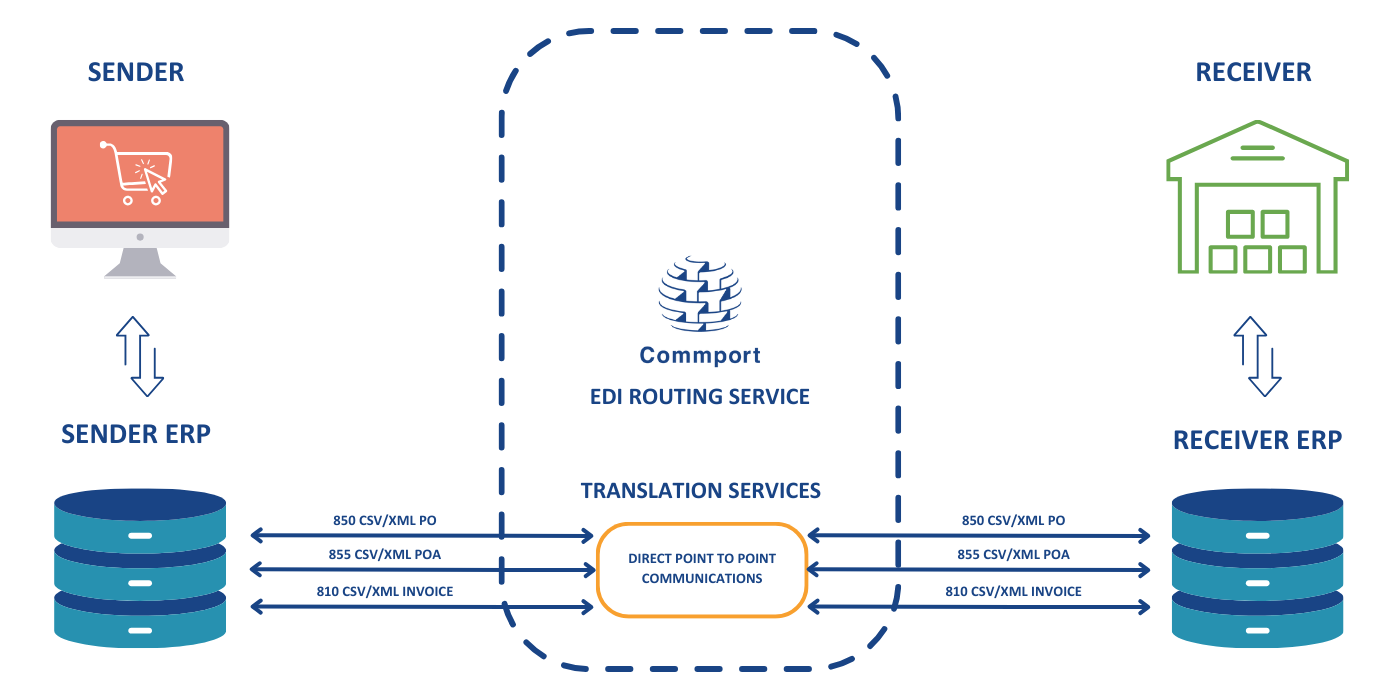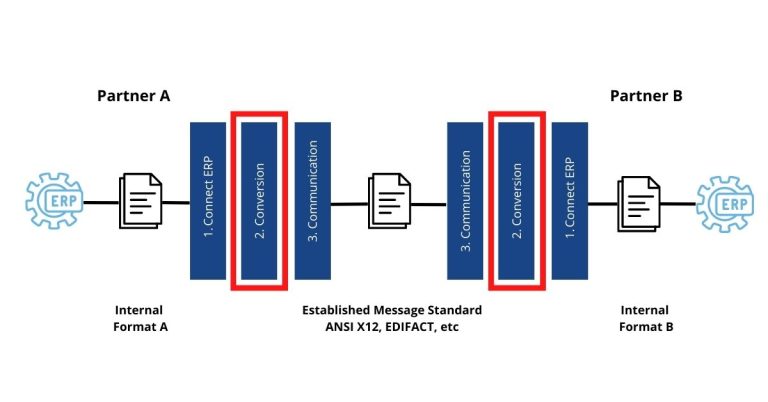
HOW
How does Commport’s EDI translation service work for buyers and suppliers?
Commport’s EDI mapping service can map data on an EDI-to-EDI basis or on an EDI to another format.
Commport offers customers the ability to generate business documents from their in-house system and seamlessly convert them into an EDI standard format, tailored to meet the specific requirements of trading partners.

Most business and ERP systems don’t inherently read or create business documents using the international EDI data standards such as ANSI X12 and UN EDIFACT. As a result, there is some sort of translation or transformation needed to convert documents to and from business systems for use.
Commport allows customers to create business documents from an in-house system and have them converted to an EDI standard format that meets trading partner requirements. The document in EDI format is then sent using the Commport VAN and communicated to the business partner who will then convert the EDI standard document into the format which meets their internal system requirements for processing.
Inbound documents flow through a similar path where they are received from partners into the Commport network and then converted to the specific format required for integration into the customer’s business system

Commport's Hosted EDI Translation Service provides secure and compliant data transfer, increasing operational speed and productivity through automation and streamlined document exchange. By simplifying processes and reducing costs associated with manual processing, businesses can focus on their core competencies while leaving technical requirements to the experts.

Commport’s EDI mapping service can map data on an EDI-to-EDI basis or on an EDI to another format.
Commport’s EDI mapping service can map data on an EDI-to-EDI basis or on an EDI to another format.
EDI mapping is a process of establishing the translation of EDI documents to or from a format that is used for integration.
During this mapping process, data structures are defined so that documents can be translated to or from an EDI standard format (EDIFACT, ANSIX12) to a proprietary file that can be easily integrated into a backend business system (ERP).
Here is a sample of some of the most common file format mapping supported by Commport’s Hosted EDI Translation service.


leveraging EDI mapping as a managed service can provide organizations with the expertise, cost savings, scalability, data quality, efficiency, and ongoing support necessary for successful and reliable EDI transactions.
Discover the transformative impact of our EDI, CPS, and VAN solutions through the powerful testimonials of satisfied clients who have experienced remarkable results with Commport products and services.








leveraging EDI mapping as a managed service can provide organizations with the expertise, cost savings, scalability, data quality, efficiency, and ongoing support necessary for successful and reliable EDI transactions.
EDI translation is the process of converting the data from the EDI format into a format that can be understood by the receiving system.
The EDI translator can perform various functions, including parsing the EDI message, validating the data, and mapping the data to the correct fields in the receiving system. The translator can also convert the EDI message into a format that can be easily integrated with the receiving system, such as XML or CSV.
The process involves several steps, including parsing the EDI message, validating the data, and mapping the data to the correct fields in the receiving system.
EDI mapping is the process of defining the relationship between the data in an Electronic Data Interchange (EDI) message and the corresponding data elements in the receiving system. EDI mapping involves mapping the data in the EDI message to the fields in the receiving system.
The goal of EDI mapping is to transform and map the data in the EDI message to the correct fields in the receiving system. Here are the steps Analyzing the EDI message, Identifying the data elements, Creating the mapping rules, Testing the mapping and Finalizing the mapping